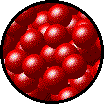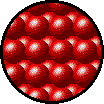Welcome to English for Science and Tecnology blog, where you can find interesting information.
Hello!! I'm Arelis Valdés, I attend English Classes at Aguadulce Extension University in Third level.
Clic below please,
As you know, English is necessary in all areas for study, meet people, make friends, and why not, to get a well paid job.
Panama is a connection point thanks to the Panama Canal, for that reason, our country is demanding bilingual people. So, you can come and learn english too, with good classmates and excellent professors lke teacher Omar Pinzón.
This blog is a project for ING392.
Please you can check my voki in the next link, Thanks!
http://www.voki.com/site/pickup?scid=10054039&chsm=93d9cce4d88b38035a14df9aac907359#.WD9DSwR56ZM.twitter




















